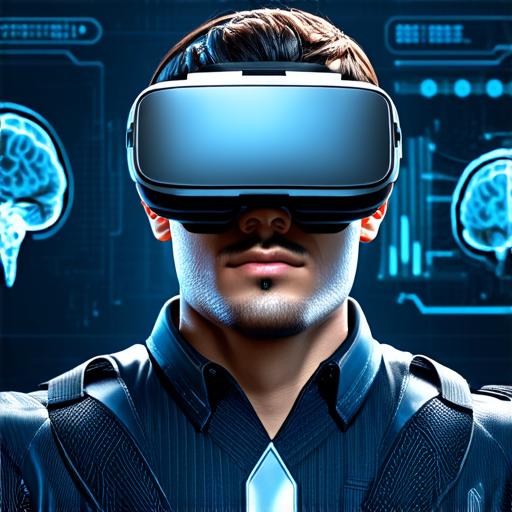The Risks of Virtual Reality Headsets
Virtual reality (VR) technology has revolutionized the way we interact with digital content and has opened up new possibilities for gaming, education, and other industries. However, like any other technology, VR headsets also have potential risks associated with them.
Eye Strain
One of the most common complaints from VR users is eye strain. This is because VR headsets can cause an extreme shift in focus, causing your eyes to work harder than they would when using traditional screens. This can lead to dryness, fatigue, and headaches.
Motion Sickness
Motion sickness is another common issue with VR headsets. It occurs when there is a mismatch between what your brain is processing (the real-world environment) and the visual input it receives from the VR headset (a virtual environment). This can cause feelings of nausea, dizziness, and disorientation.
Dependence
VR technology can be addictive, leading to a dependence on the virtual world over the real one. This can lead to social isolation, lack of physical activity, and an overall decrease in productivity.
Motion Capture
Motion capture technology used by some VR headsets may cause discomfort or even pain if used for extended periods. This is because it requires a lot of movement from the user’s body, which can lead to fatigue and soreness.
Health Risks
There have been some concerns about the potential health risks associated with VR headsets. For example, there have been reports of seizures and other neurological issues in people who use VR headsets. However, these are rare and generally occur in people with underlying medical conditions.
Mitigating the Risks of VR Headsets
There are several ways to mitigate the risks associated with VR headsets. These include:
- Adjusting Settings
- Taking Breaks
- Choosing the Right Headset
- Staying Healthy
Case Studies: Real-Life Examples of VR Headset Risks and Mitigation Strategies
Eye Strain
John, a 35-year-old software engineer, used VR headsets for several hours each day as part of his job. He noticed that his eyes were feeling dry and sore after long periods of use. John adjusted the brightness settings on his headset to reduce eye strain and also took regular breaks to rest his eyes.
Motion Sickness
Sarah, a 25-year-old college student, experienced motion sickness when using VR headsets for gaming. She found that adjusting the focus settings on her headset helped reduce motion sickness, and she also took breaks to avoid spending too much time in the virtual world.
Dependence
Tom, a 40-year-old businessman, became addicted to VR headsets and found himself neglecting his real-life responsibilities. He realized that he needed to set limits on how much time he spent in the virtual world and took steps to reduce his dependence on it.
Motion Capture
Lena, a 30-year-old fitness instructor, used motion capture technology as part of her job training. She found that taking regular breaks and adjusting the settings on her headset helped reduce discomfort and soreness from motion capture.
Summary: Balancing the Benefits and Risks of VR Headsets
Virtual reality technology has numerous benefits, including immersive gaming, education, and other industries. However, like any other technology, it also has potential risks associated with it. It’s important to be aware of these risks and take steps to mitigate them, such as adjusting settings, taking breaks, choosing the right headset, and maintaining good physical health. By doing so, we can balance the benefits and risks of VR headsets and enjoy the immersive virtual world without compromising our health or well-being.
FAQs

Q: Are VR headsets harmful to my eyes?
A: While VR headsets can cause eye strain in some people, there is no evidence that they are harmful to your eyes.
Q: Can I get motion sickness from using VR headsets?
A: Yes, motion sickness is a common issue with VR headsets. However, it can be mitigated by adjusting settings and taking breaks.
Q: Is there a risk of developing seizures or other neurological issues when using VR headsets?
A: While there have been rare reports of seizures in people who use VR headsets, the risk is generally low, especially for healthy individuals.
Q: How long should I spend in the virtual world before taking a break?
A: The amount of time you spend in the virtual world will depend on your individual needs and preferences. However, it’s important to take regular breaks to avoid overuse and reduce the risk of eye strain and motion sickness.
